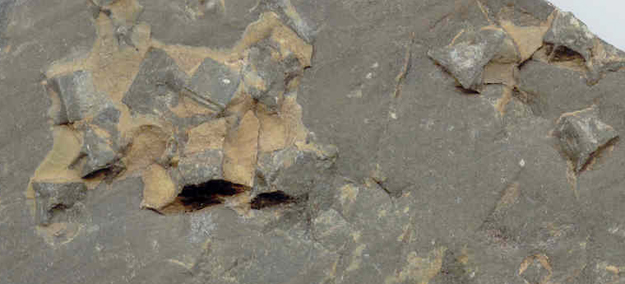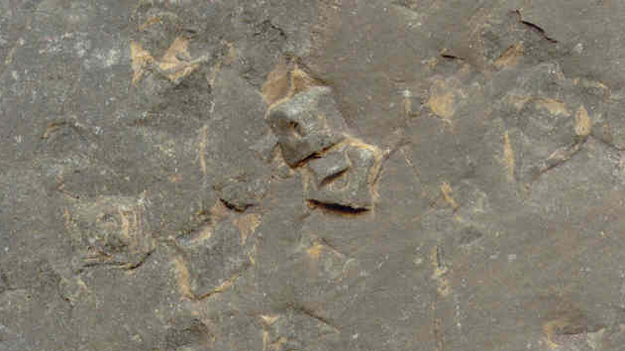I collect a lot of samples when I roam the west on my summer georoadtrips. Yesterday when I got back to my office at NOVA, I unloaded about 200 pounds of rocks from my Prius. These samples are all destined to serve as teaching aides for NOVA and GMU students in lab exercises and/or hallway displays.
One of the samples I scored this summer that I am very excited to put to use in teaching is this sample of olive-colored argillite (metamudstone) from the Belt Supergroup:

(Scanned image; penny for scale) Two close-ups:


I’m interpreting those cube-shaped protrusions are halite (salt) casts, indicating that the water that was depositing this green mud got hypersaline occasionally, and that caused NaCl become oversaturated. Crystals nucleated on the seafloor and grew in the cubic habit of halite, only to be buried by new mud and dissolved away, with mud filling in that cube-shaped void space to create muddy casts of the original crystals.
Along with other primary sedimentary structures like mudcracks, stromatolites, and ripple marks, these salt casts suggest a relatively shallow environment of deposition for the Belt Supergroup during the Mesoproterozoic era of geologic time. This sample is destined to join the “sedimentary structures” lab sample set for my Historical Geology course.

0 thoughts on “Halite Casts from Belt argillite”